The final week’s program of afternoon classes were focused on struggles between development and conservation with reference to the concept of Buen Vivir (Good Living). Buen Vivir is actually the Quechua phrase Sumak Kawsay and refers to the coexistence of social and ecological well-being. The term is used in Ecuador’s 2008 constitution.
The week was also packed with a variety of field excursions.
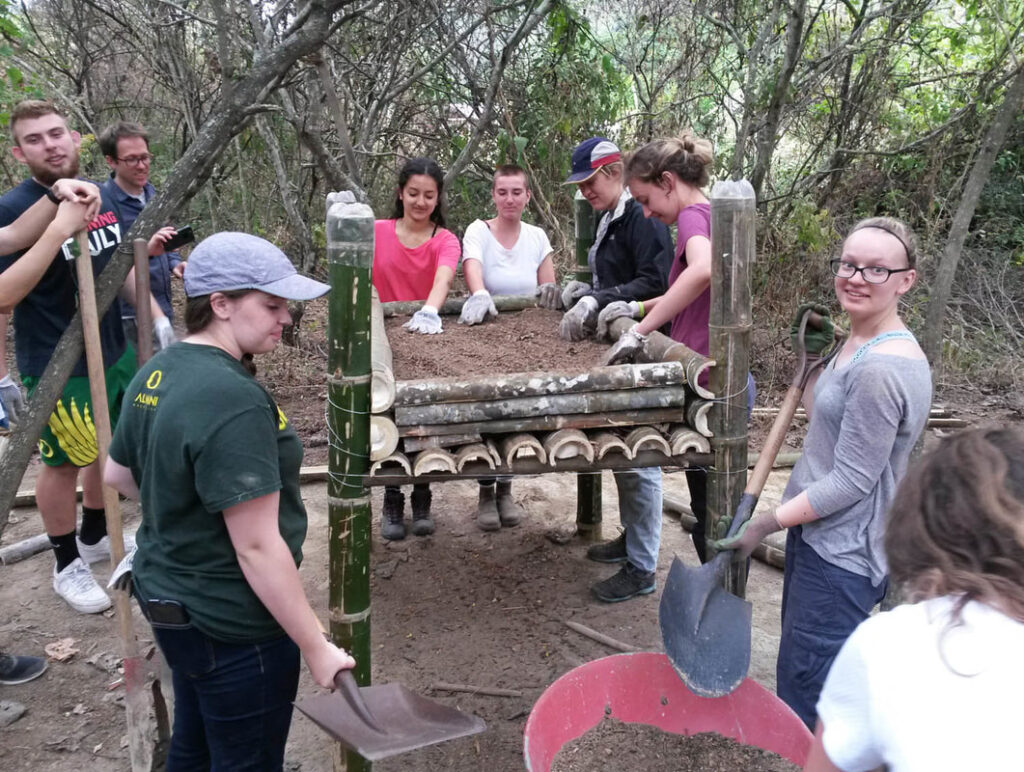
On Monday, the group made their last visit to the greenhouse. They helped construct two elevated seedbeds there. The students planted Chirimoya and Laurel seeds they had collected during their visit to the Cerro Seco Biological Reserve in one of the seedbeds.
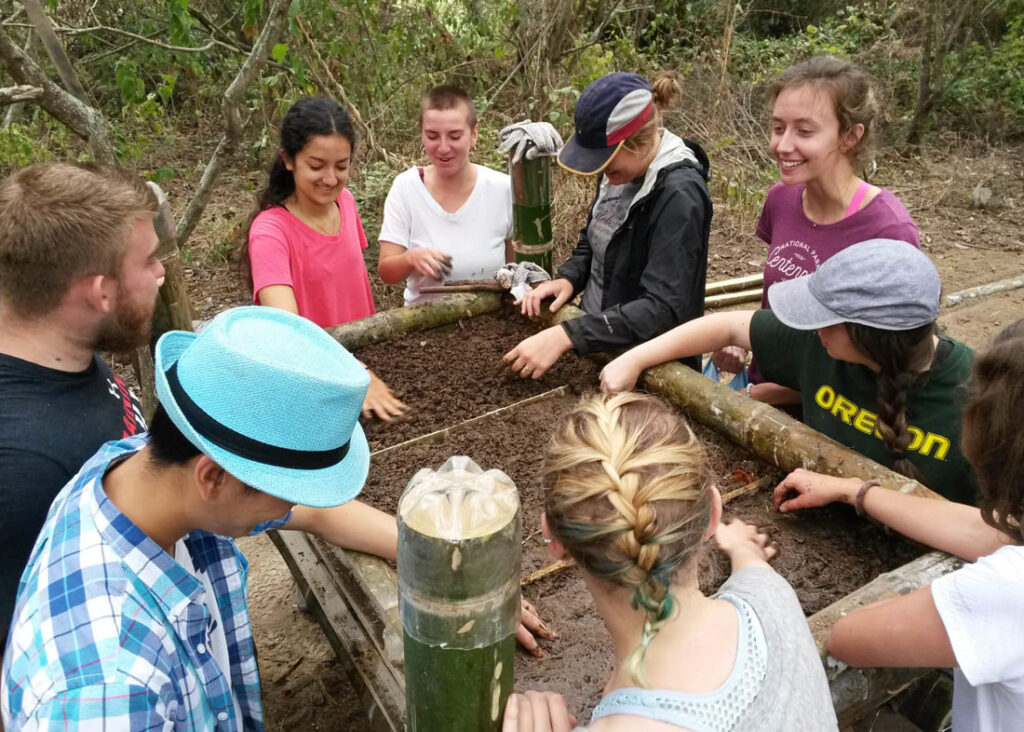
The students also gained hands-on experience watering trees during the dry season by carrying gallons of water to a site near the previous greenhouse at the Catholic University.
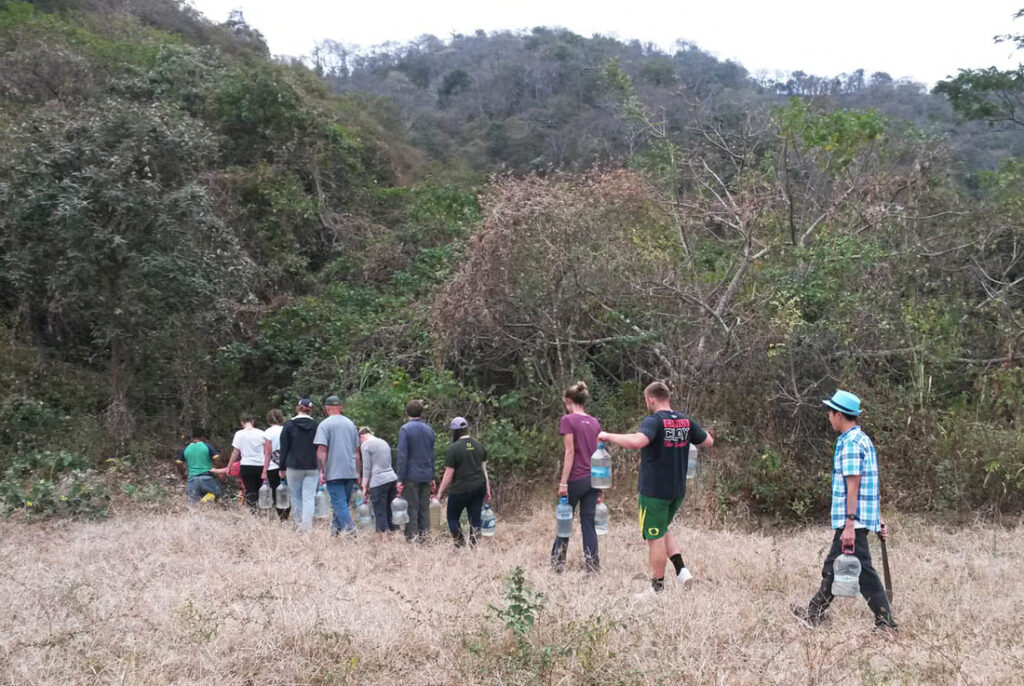


Tuesday we took a walk through town to the Municipality (City Hall), which is currently operating out of bunkers across the street from the former building, which is being repaired from because of earthquake damages. Two city officials kindly agreed to meet with us and discuss city planning strategies. Sergio Zambrano, from the environmental department, explained several projects the city government is implementing to generate employment. One project supports cacoa growers and another produces farm-raised fish (Chame) in artificial ponds. Vicente Leon of the planning department talked about how various projects are planned, approved, and financed. He also gave a brief history of the Ecological City movement and Bahía’s declaration as an ecological city.
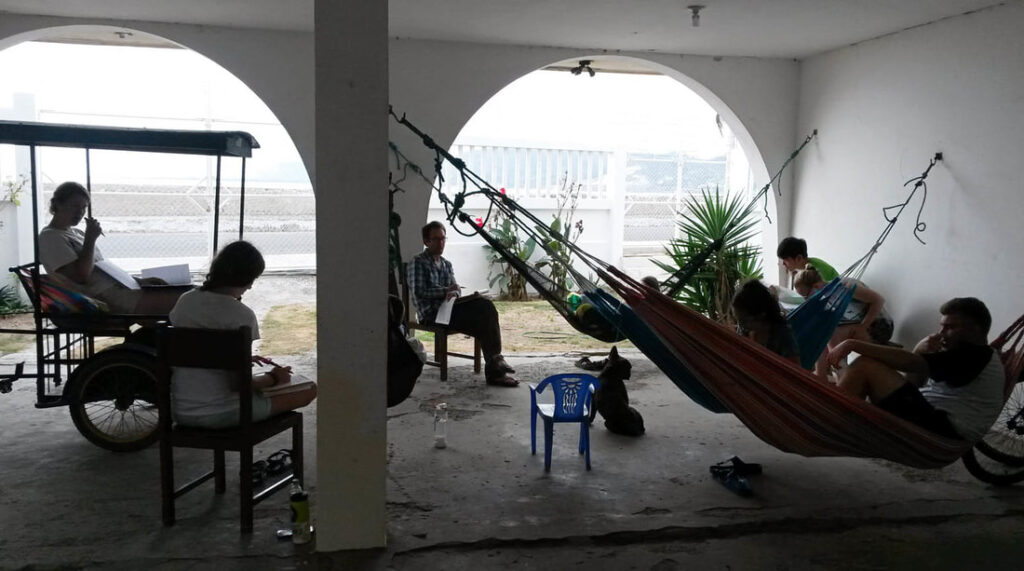

Wednesday was a particularly special day because we went to visit the Isla Corazon wildlife refuge. One of the local guides and an old friend of Planet Drum, Don Francisco, gave us an extra long tour that included: a visit to a nearby shrimp farm, a boat tour to Isla Fragatas and a visit to the community of Puerto Belo.
At the shrimp farm, Don Francisco explained some of the social and ecological impacts that the massive shrimp farming industry caused to the region. We also learned how shrimp are farmed in the large pools built on top of what was previously mangrove habitat. Everyone got to try out replanting an area of mangroves which had been severely damaged during the earthquake.

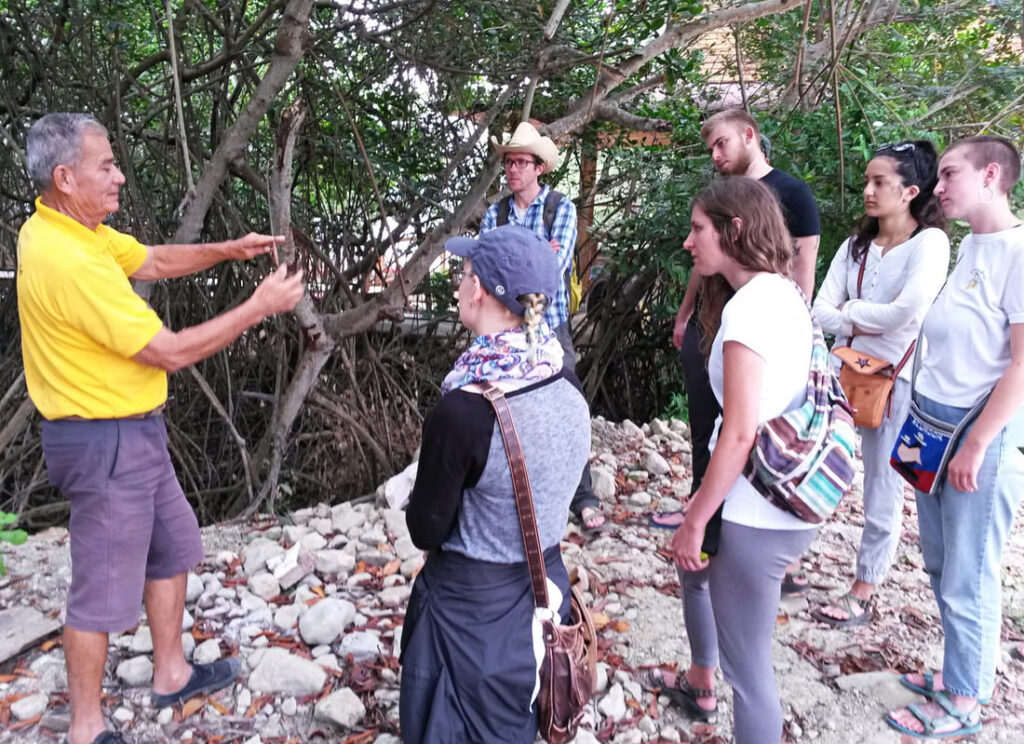

After the shrimp farm visit, we walked to the docks and prepared to board a panga boat for the water portion of the tour. Don Francisco directed the boat to Isla de las Fragatas, where the Fragata colony now resides. The bird colony used to be located on part of Heart Island, but many mangrove trees there were killed by the earthquake, and the birds subsequently moved their colony to nearby Isla de las Fragatas. Tens of thousands of Fragata (Frigate) birds filled the sky around the mangrove island.

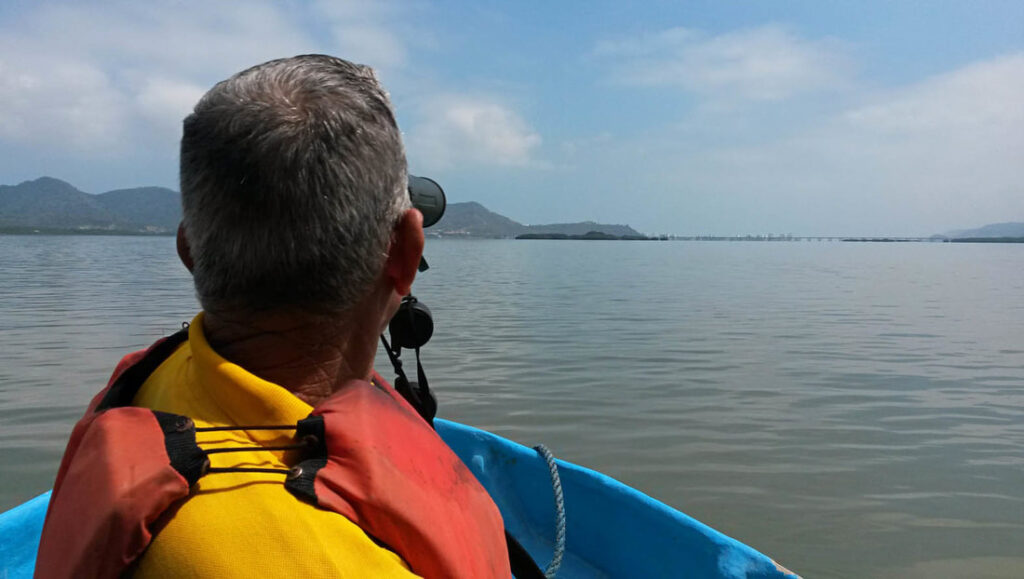

From Isla de las Fragatas, the boat took us to the back side of Isla Corazon (Heart Island). We could see all of the dead mangrove trees, where the frigate bird colony used to be located. Other guides were waiting for us with canoes to take a tour through a tunnel in the mangrove trees. We climbed from the boats into the canoes and were paddled through the mangroves. After returning to the panga boats we were taken back to the docks and dry land. It was just about lunch time, so we walked from the Isla Corazon headquarters, through the shrimp farms, to the town of Puerto Belo.
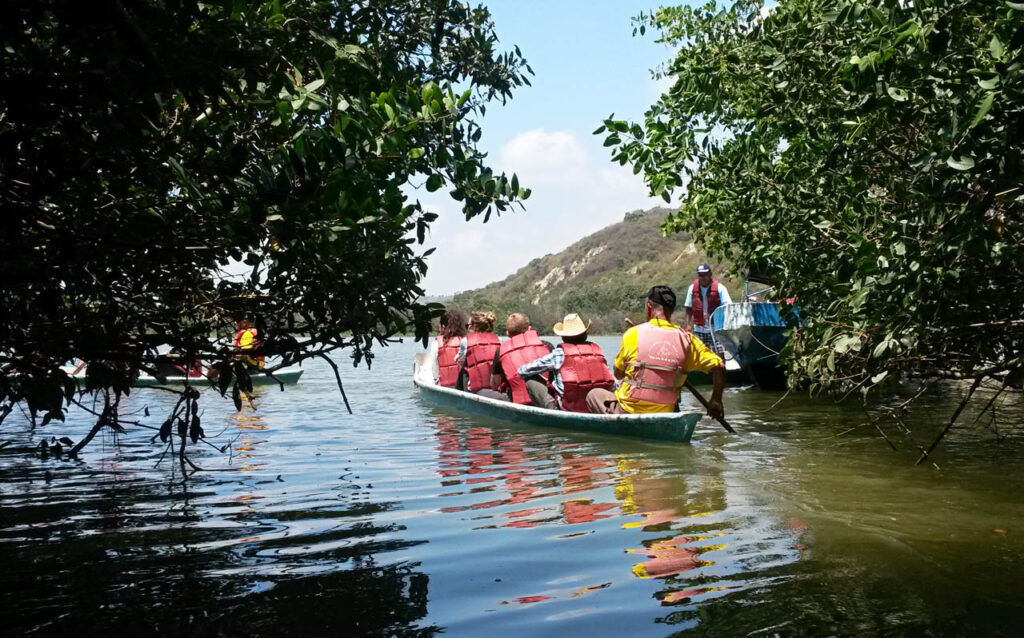
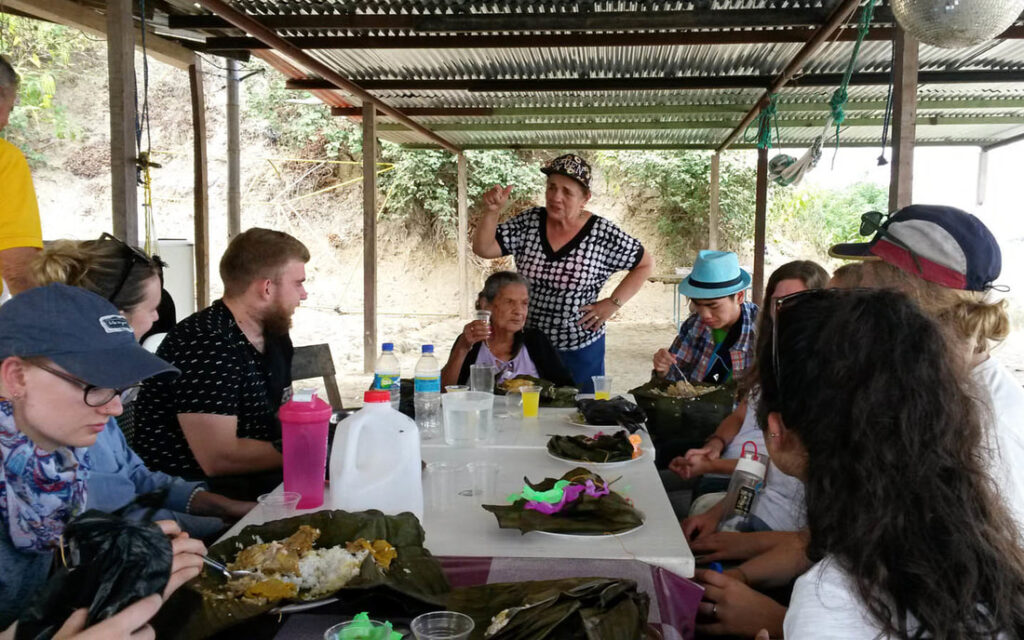
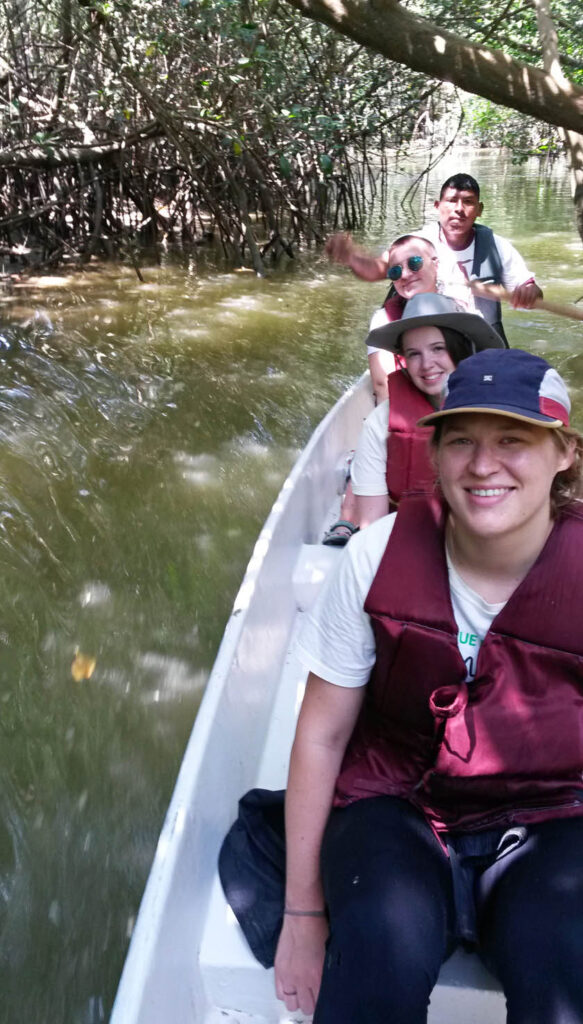

That same day Don Francisco’s family was celebrating his mother’s 100th birthday and he had invited us to lunch with them. The menu was a traditional dish called Tonga, a chicken, rice, and peanut sauce meal wrapped in banana leaves. Don Francisco’s mother recounted stories about how their town used to be a large port, where ships docked and loaded up with plantains, tagua (vegetable ivory), cacoa, and coffee for international commerce. Her family made money by preparing and selling food to the sailors. Towards the end of the meal, they sang Amores Finos, romantic verses traditionally used in courtship.



On Thursday, the group walked from the Planet Drum house across town and to the hillside neighborhood where the Bosque en Medio de las Ruinas (Forest amidst the Ruins) urban park is located. This is Peter Berg and Planet Drum’s original revegetation site in Bahía de Caráquez and the visit coincided with readings for the course from Berg’s book Envisioning Sustainability. At the Ruinas park, students received a class in machete handling from Clay and Orlando. The first order of business was to sharpen the machetes with whetstones. After receiving safety tips about wielding machetes, the students dispersed throughout the trails in the park and began to hack back weeds, which had grown during the rainy season. The trees that Planet Drum planted for erosion control over the years along this hillside are doing really well, with hundreds of trees of various sizes, some up to seven or eight meters tall with large trunks, and deep roots systems holding the loose soil in place.
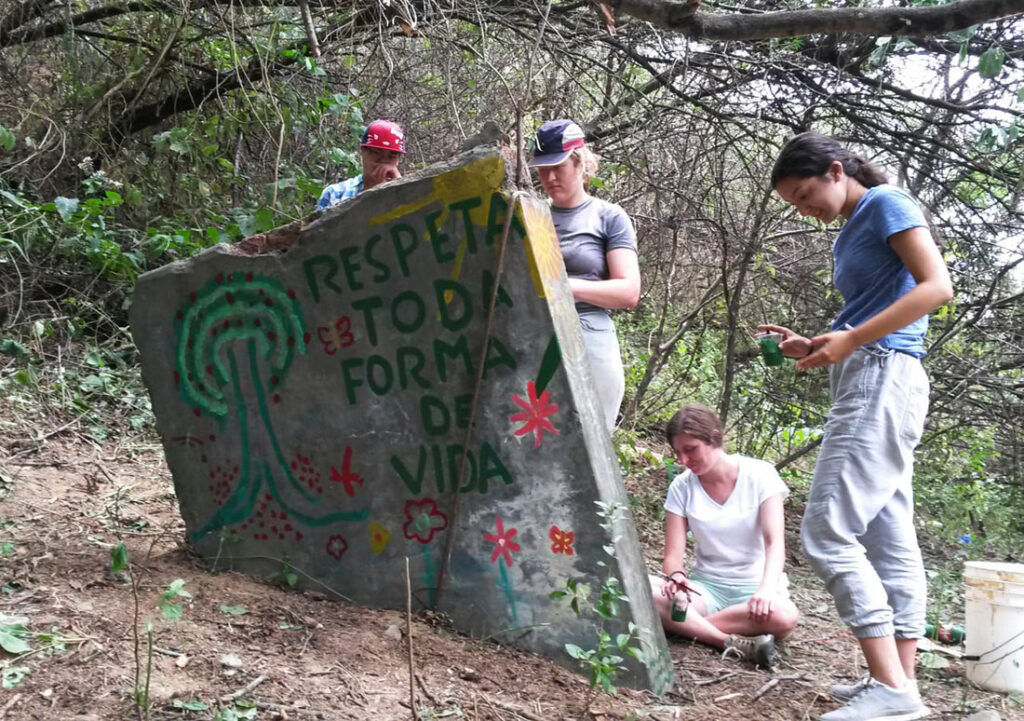
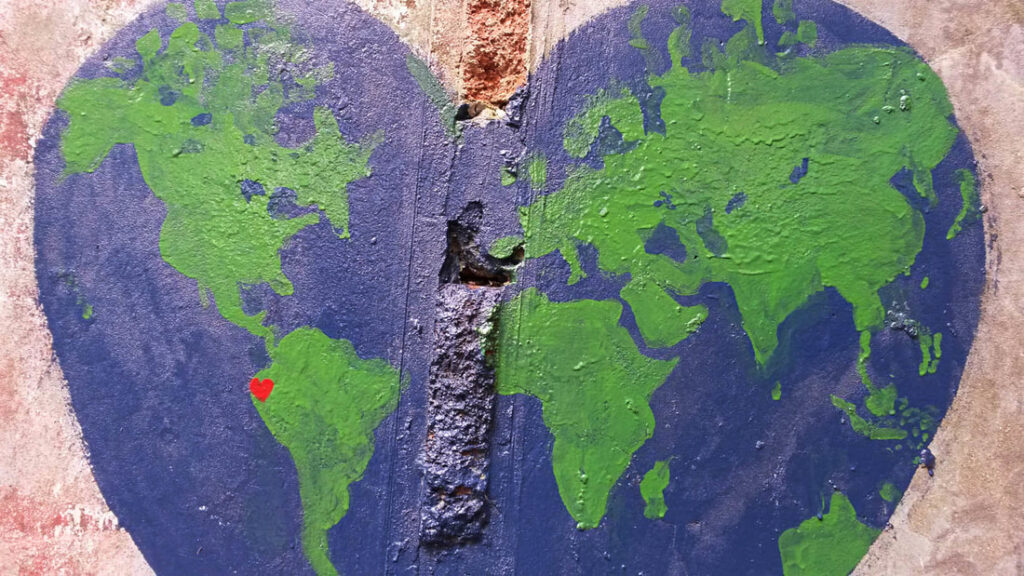
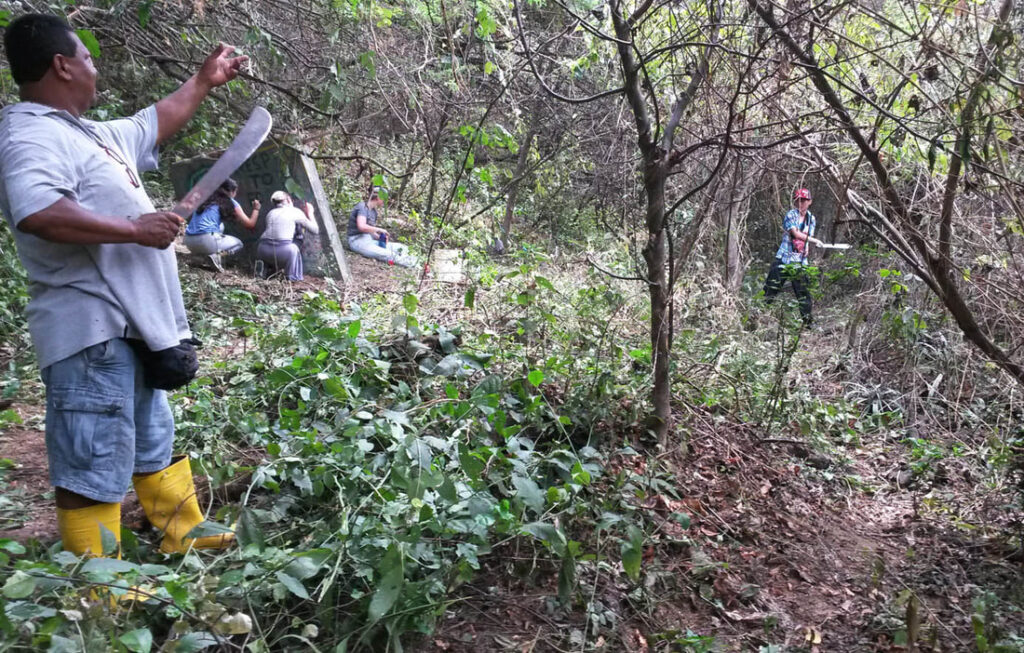
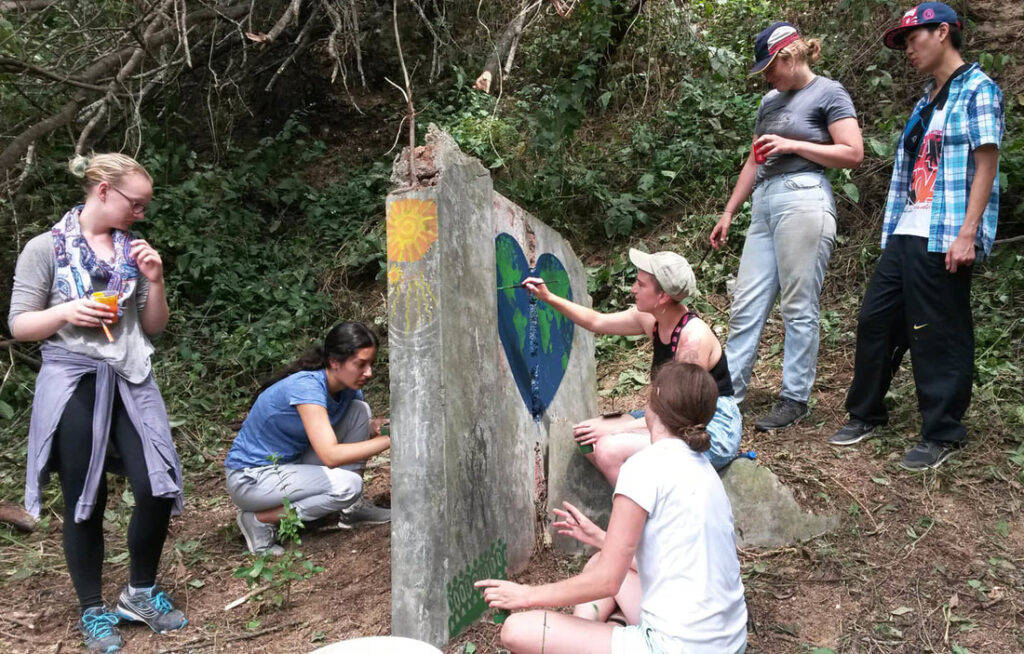
In addition to the machete work, several of the students helped retouch the old mural and made new paintings on what is probably the remnants of a water cistern.
Friday was the final day of scheduled activities, the grand finale. The group piled into the van for transportation along the structurally challenged roads of Manabí to another small coastal city south of Bahia, Crucita. The Crucita community is one of the first to participate in the 2012 National Electric Company’s (CNEL) pilot project Árbol Eléctrico (Electric Tree). As part of the program, residents in areas receiving new electrical infrastructure also receive one native tree for every $500 the company spends there. It typically works out to be about one to three trees per household. Many of the rural residents around Crucita carefully planted and cared for their trees, which are now quite large and already bearing lots of fruit!
After introducing ourselves to various representatives from CNEL and community members from Crucita and taking a slew of group pictures, we got to work planting the trees that we had delivered a couple of days previously. At each of the four farms we visited, a handful of trees were planted. I actually could not recognize the areas that we had planted 5 years ago because of all of the new vegetation. Areas with literally nothing growing are now teaming with trees and plants.
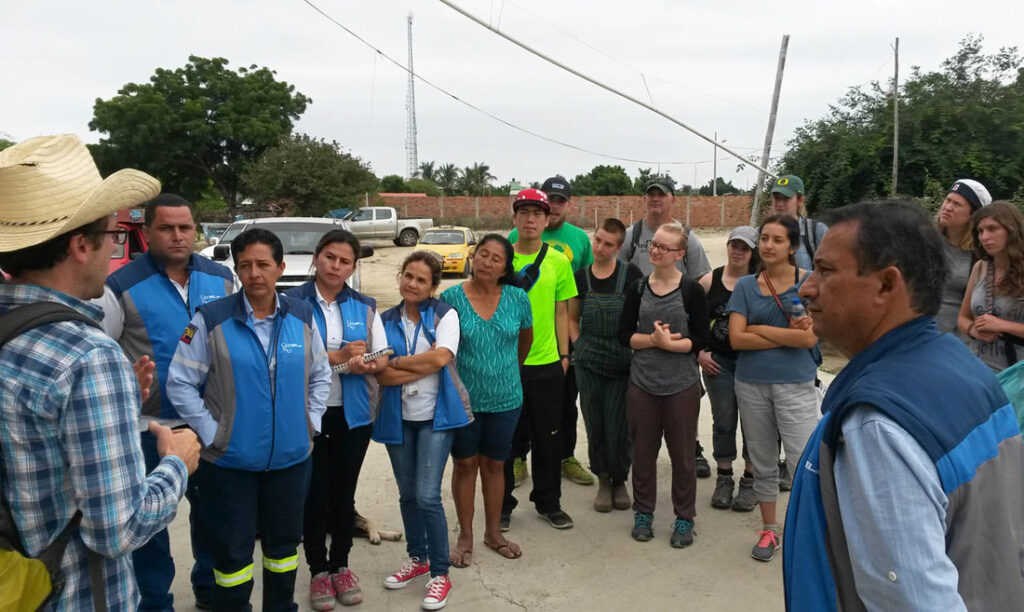
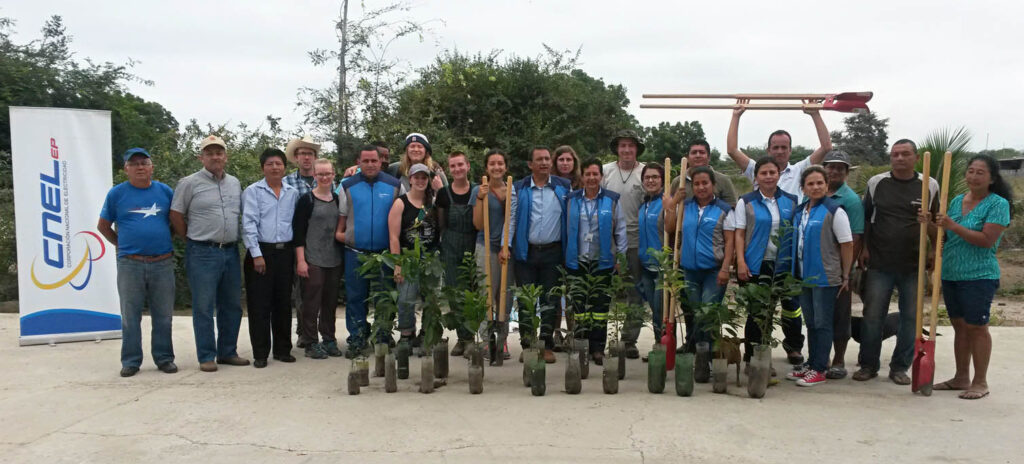
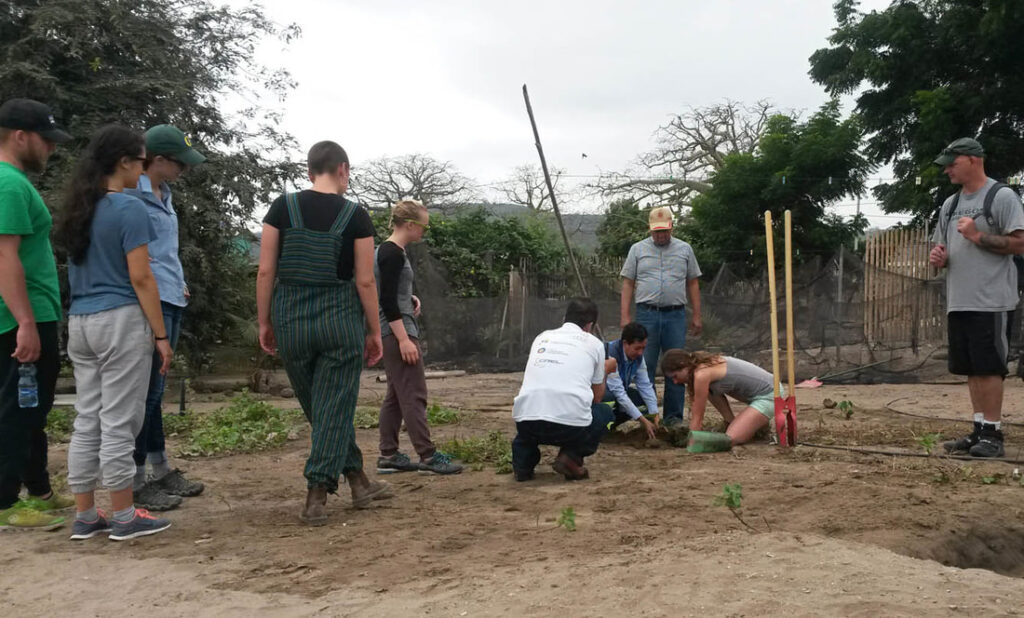




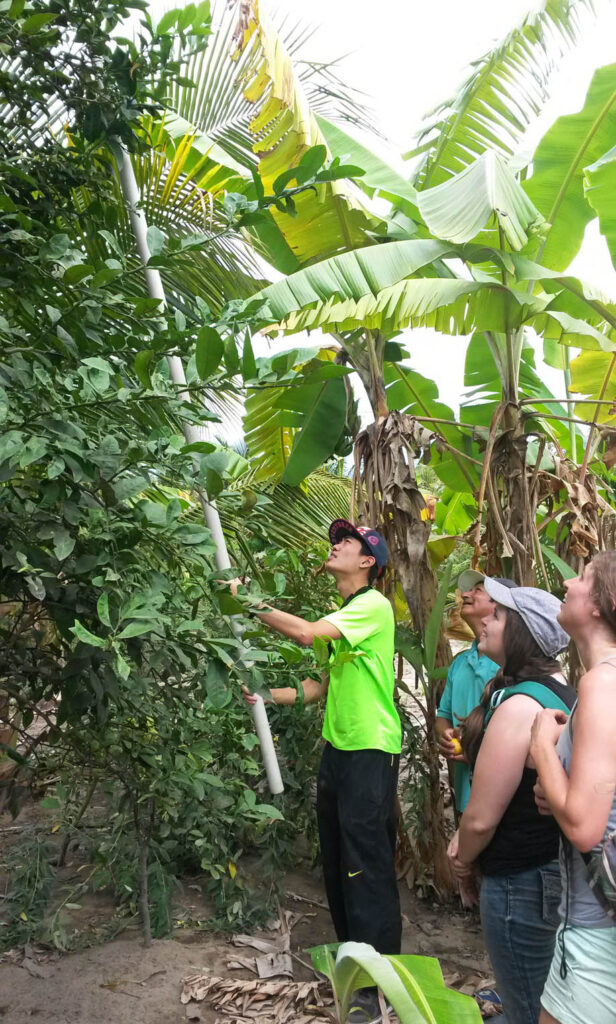
After a morning of socializing, fruit harvesting, fruit planting, and a visit to a fish processing site, the residents invited us all for a ceviche of Pinchagua (Sardine). Just as tasty, or possibly even better, was the maní quebrado (crushed peanuts), which had been locally grown and recently crushed, served with chifles (plantain chips). Many thanks to CNEL and the residents of Crucita for helping to organize a great cultural exchange and for their commitment to the planting and caring of native fruit trees!
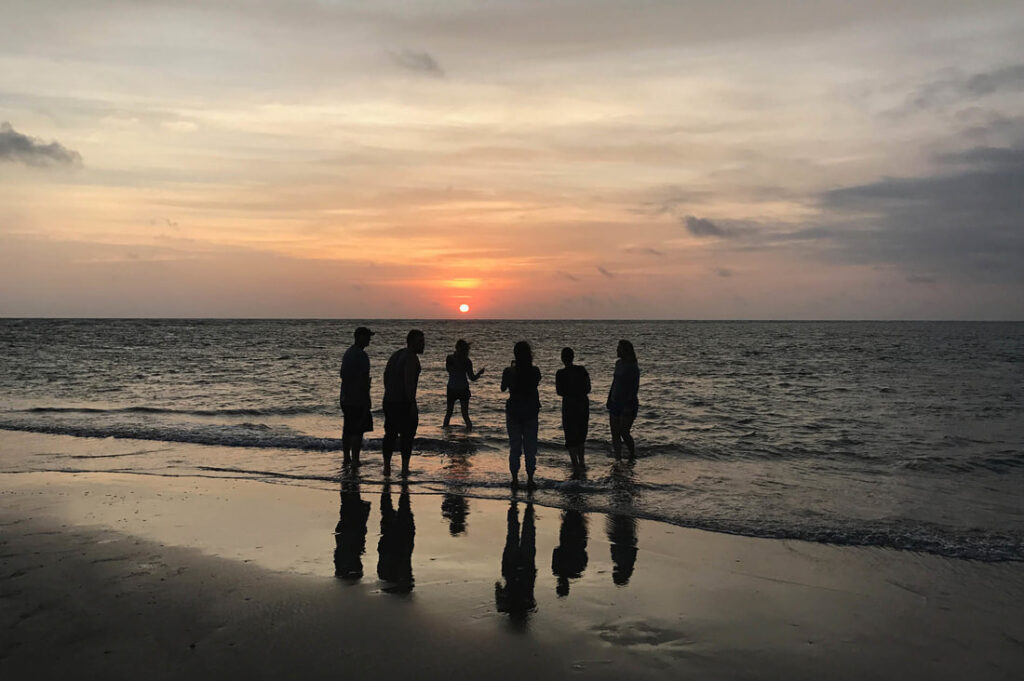
Overall, the trip went very well and the students gave positive reviews of the program. Thanks to Jesse and all of the University of Oregon students for sharing three weeks with Planet Drum’s ecological projects in Ecuador!

Thanks for sharing. I read many of your blog posts, cool, your blog is very good.